A Guide to In-Car Audio Brands
There's a story behind every name you see on speaker grilles.
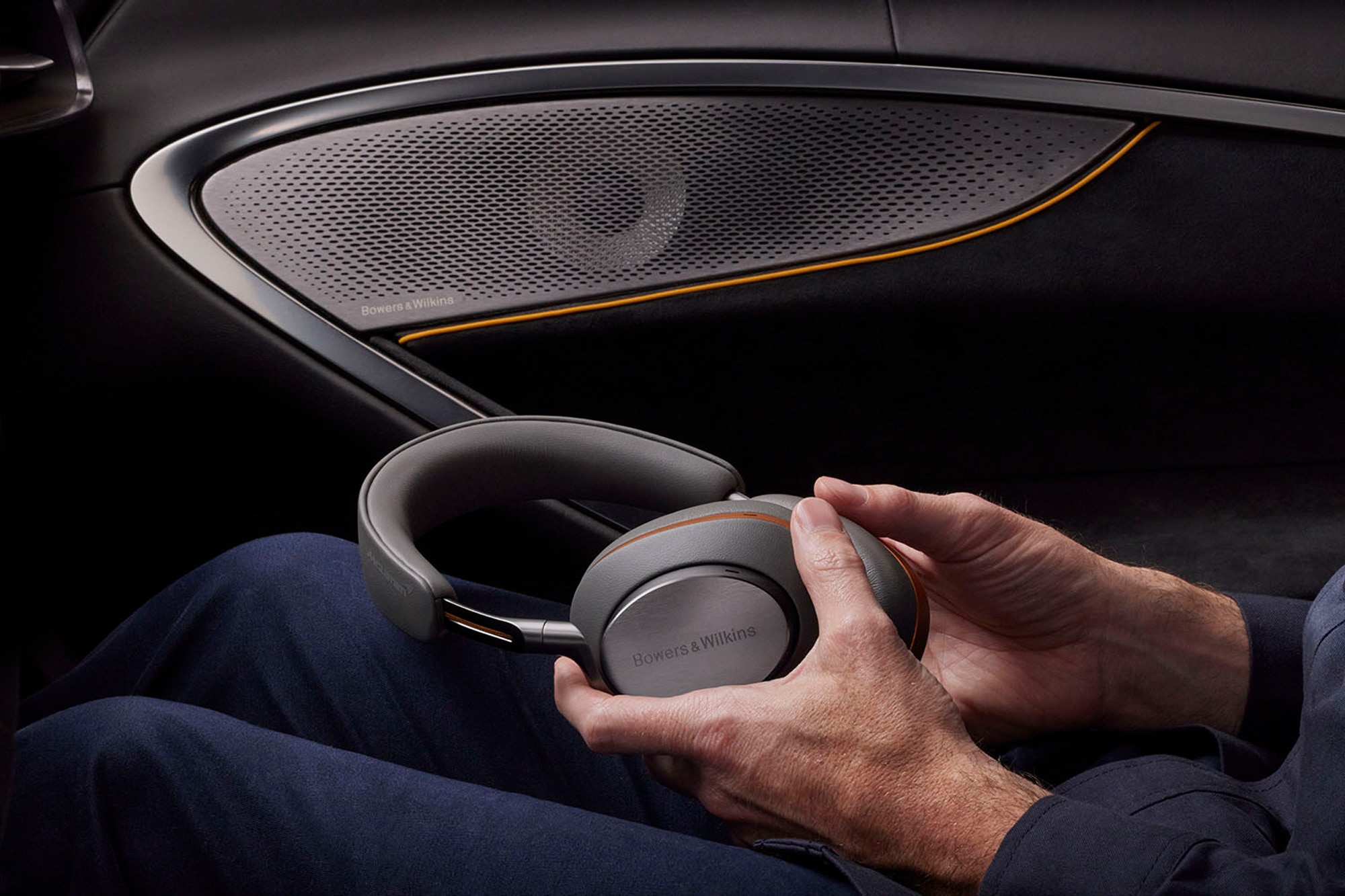 McLaren
McLaren
A brand-name sound system is one of the most expensive features to add to a new car. Systems made by respected companies such as Bose and Harman Kardon were once exclusively available on high-end models. They've since trickled down to more mainstream vehicles to give drivers a better listening experience and to give carmakers an additional selling point.
The technology from some of the best-known audio companies has found its way into cars and given us even more ways to enjoy the ride.
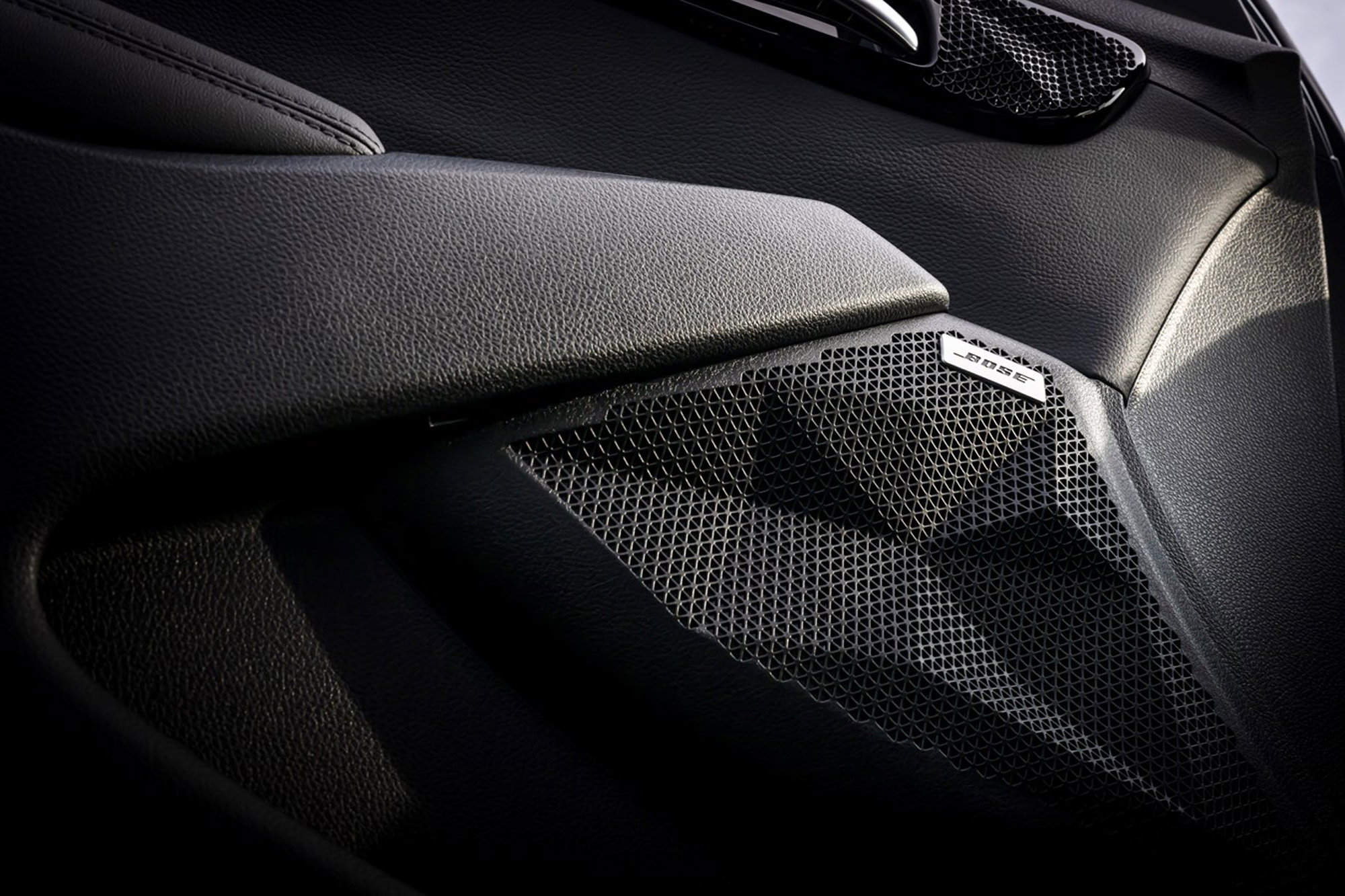 Kia
Kia
East Coast Sound From Bose
Founded in 1964 by Amar Bose, Massachusetts-based Bose worked on a wide selection of products, including power-regulating systems used by government agencies, before narrowing its focus to speakers and audio systems. Bose took its first steps in the automotive industry in 1983, when it joined forces with Delco to make a sound system for General Motors' Cadillac Seville, Buick Riviera, and Oldsmobile Toronado.
Most of Bose's in-car sound systems feature a subtle design with black grilles and a Bose logo. The brand tailors each system to a specific car, and its technology is available in many models from all over the automotive spectrum. The 2024 Kia Seltos SX comes standard with an eight-speaker Bose sound system, while Porsche 911 buyers can order an optional $1,600 12-speaker Bose surround-sound system.
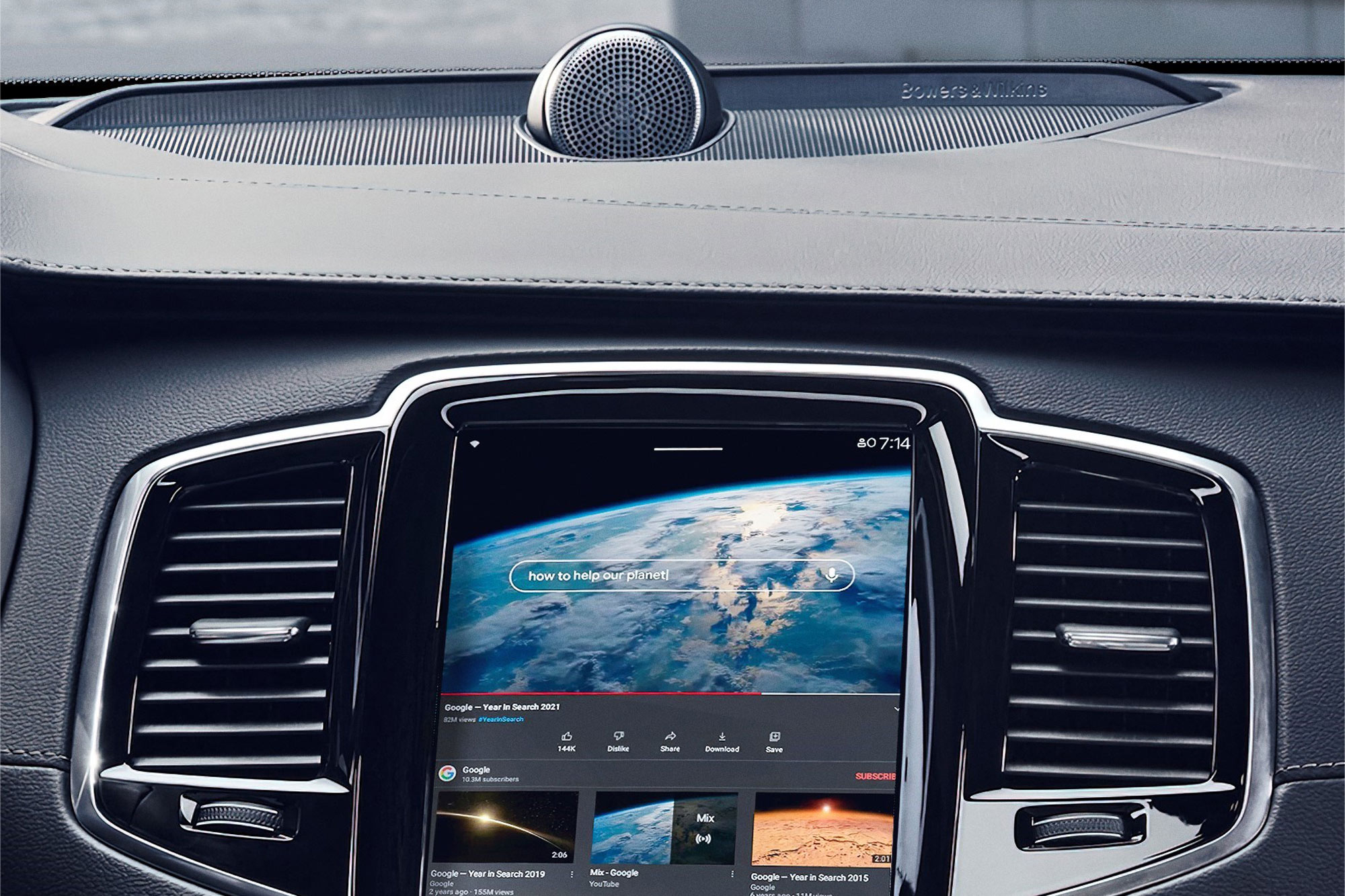 Volvo
Volvo
High-End British Audio From Bowers & Wilkins
World War II veterans John Bowers and Roy Wilkins launched the company that bears their name in Worthing, England, in 1946. They opened a store that sold radio equipment and later added speakers to their inventory. Bowers left the store in the 1960s to devote his time to developing speakers.
Bowers & Wilkins earned a reputation for making high-end speakers with clear sound. After hiring industrial designer Kenneth Grange in 1975, it also became known for elegant design. The company stepped into the automotive industry in 2007, developing the standard sound system on the Jaguar XKR and subsequently forming partnerships with several other European luxury brands.
Jaguar no longer offers a Bowers & Wilkins sound system, but Volvo, Polestar, BMW, and McLaren are among the audio company's partners. BMW charges about $5,000 to add a 40-speaker, 1,965-watt Diamond surround-sound system to the 760i xDrive.
Volvo offers an optional Bowers & Wilkins sound system on many of its models, including the XC90, where the setup comes with a round tweeter elegantly integrated into the dashboard. The system is a $3,200 option on the XC90, and it's only offered on the range-topping Ultimate trim.
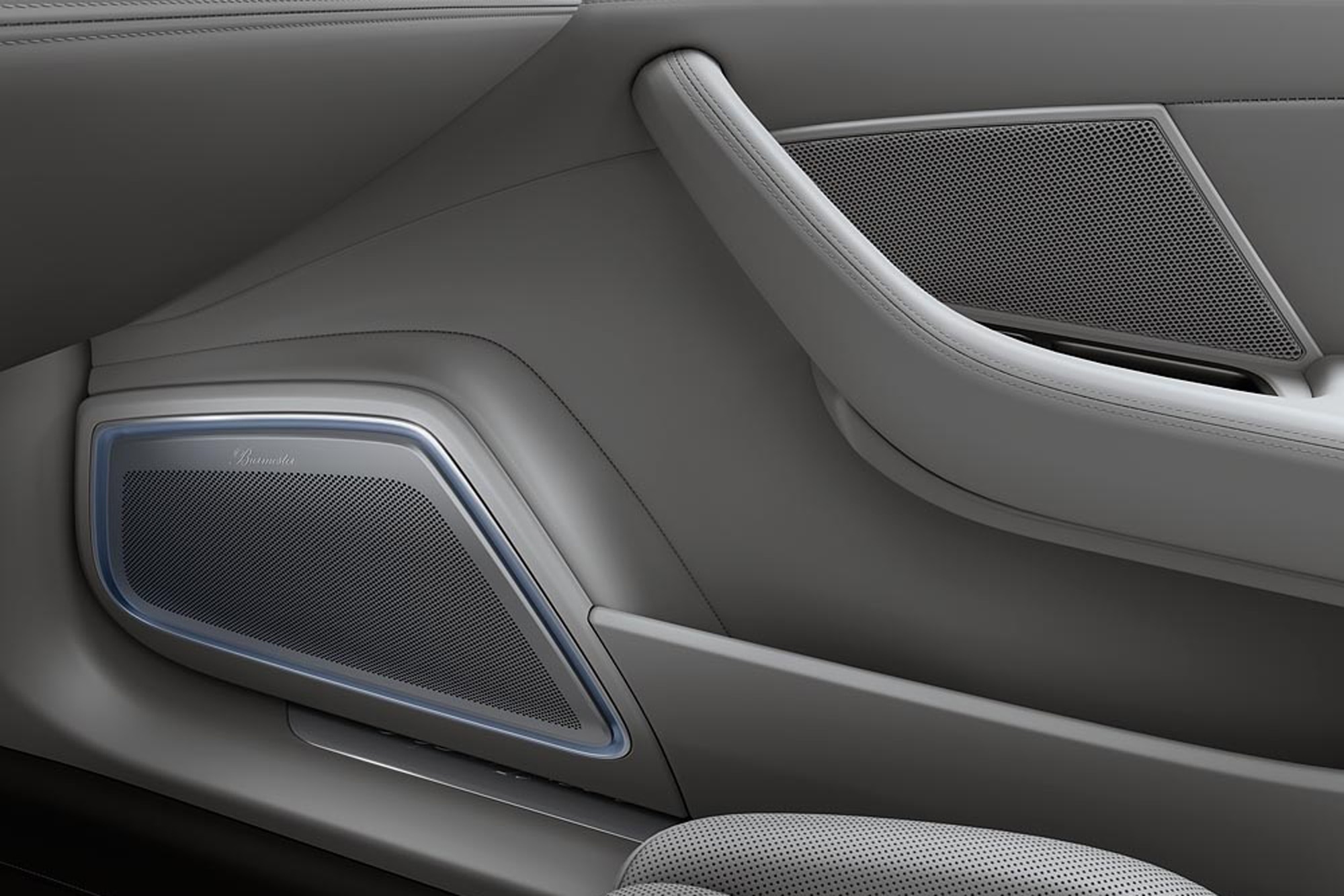 Porsche
Porsche
German Sound Specialist Burmester
Formed in Berlin, Germany, in 1978 by musician Dieter Burmester, Burmester immediately aimed for the higher end of the sound market by combining design, craftsmanship, and innovation. It offered home audio products such as speakers and amplifiers and launched the first belt-driven CD player in 1991.
Burmester's sound systems didn't appear in cars until relatively late. In the early 2000s, the brand spent about three years developing the sound system installed in the high-powered Bugatti Veyron released in 2005. The collaboration hardly bumped Burmester into the automotive mainstream, as Bugatti capped Veyron production at 450 units.
In 2009, Porsche made a Burmester surround-sound system optional on the first Panamera, and Mercedes-Benz began offering Burmester systems in 2013.
Several carmakers offer a Burmester sound system today, and almost all are pegged at the higher end of the market. The Mercedes-Benz S500 4Matic is available with a 30-speaker, 1,750-watt surround-sound system that costs about $6,800, while the Mercedes-AMG G63 comes standard with a 15-speaker setup. Buyers can replace the standard, 14-speaker Bose surround-sound system fitted to the Porsche Cayenne Turbo E-Hybrid with a 21-speaker Burmester surround-sound system for about $5,800.
Beyond better sound, Burmester's in-car sound systems bring distinctive-looking metal speaker grilles.
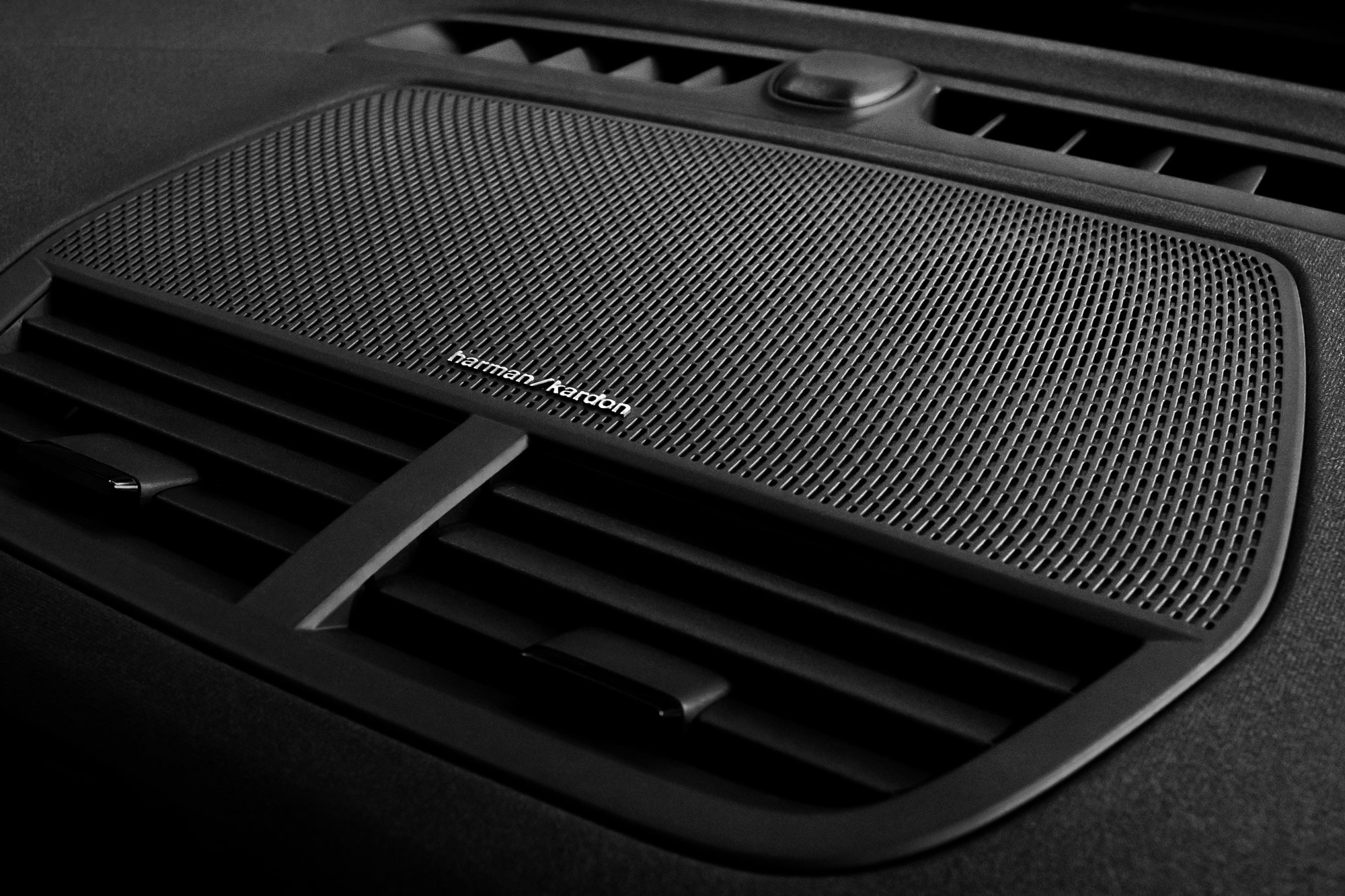 Polestar
Polestar
The Crown Jewel of Harman
Sidney Harman and Bernard Kardon founded Harman Kardon with a $5,000 investment in 1953. The firm became one of the pioneers of the receiver, which combined elements such as an amplifier and tuner into a relatively compact unit, and it quickly realized the importance of design. Part of why its early in-home sound products became popular nationwide is that they looked good in a living room.
BMW was one of the first carmakers to collaborate with Harman Kardon, offering an optional premium sound system on the E36-generation 3 Series in the 1990s. The two brands still work together. The 330i's list of options includes a Harman Kardon surround-sound system priced at $875, and the X7 M60i comes standard with a 16-speaker surround-sound system. Many BMW models with a Harman Kardon system feature speakers with a Harman Kardon logo near the mirror mounting points.
Subaru bundles a nine-speaker Harman Kardon sound system into a $1,695 option package on the Forester. Several models in the Kia range, including the Sportage, come with a Harman Kardon sound system. Polestar and Volvo also source some of their sound systems from the brand.
Harman Kardon, based in California, is one of the Harman family of brands, which includes AKG, Infinity, JBL, Lexicon, Mark Levinson, and Revel. Korean conglomerate Samsung bought Harman and its brands in 2017 for $8 billion.
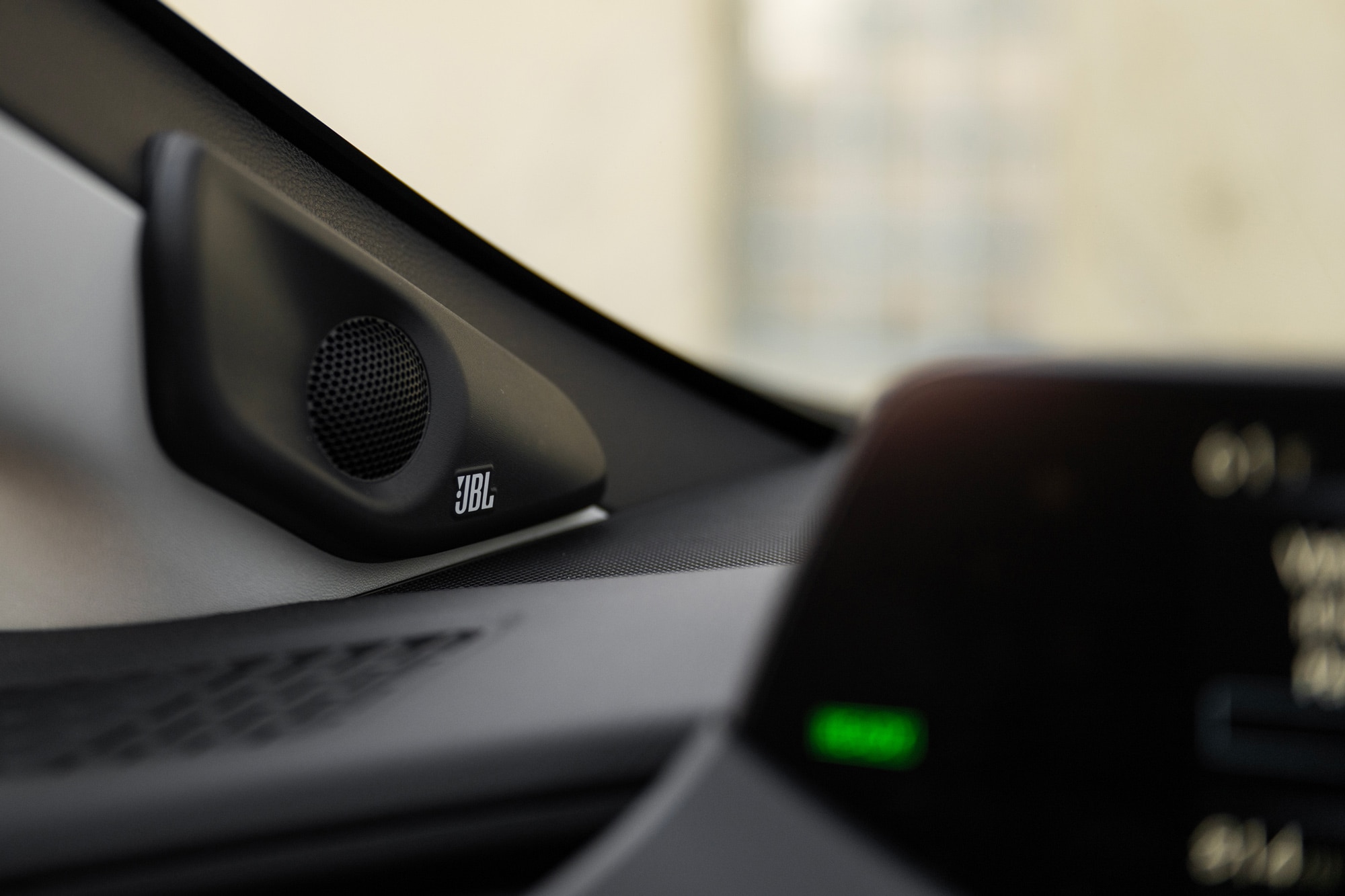 Toyota
Toyota
West Coast Sound From JBL
James B. Lansing founded JBL in 1934 in Los Angeles. The brand specialized in developing speakers for sound systems, and its expertise allowed it to enter other entertainment-industry sectors. It released the first portable public address system in 1980, and its Model 4675 speaker became the world's first THX-approved cinema system in 1982.
JBL's first in-car systems arrived in the 1980s. By 1986, the Lincoln Town Car offered an optional 12-speaker setup developed jointly by Ford and JBL. As with Bose, JBL usually designs subtle-looking sound systems denoted by a red JBL emblem on the grille.
The brand has worked with Toyota since 1998, and its technology equips a long list of models, including the 4Runner, the Corolla, and the GR Supra. The 4Runner's upmarket Limited trim comes standard with a 15-speaker JBL system, while a nine-speaker system is a $600 option on some 2024 Corolla trim levels.
Ford and JBL still collaborate today. While the automotive brand worked with Bang & Olufsen for the Bronco's sound system, it sells a JBL sound bar as an accessory priced at $230 and developed for four-door models.
Written by humans.
Edited by humans.
 Ronan Glon
Ronan GlonRonan Glon is an American journalist and automotive historian based in France. He enjoys working on old cars and spending time outdoors seeking out his next project car.
Related articles
View more related articles